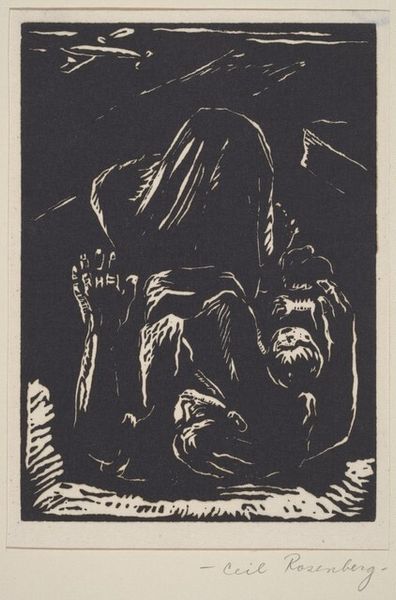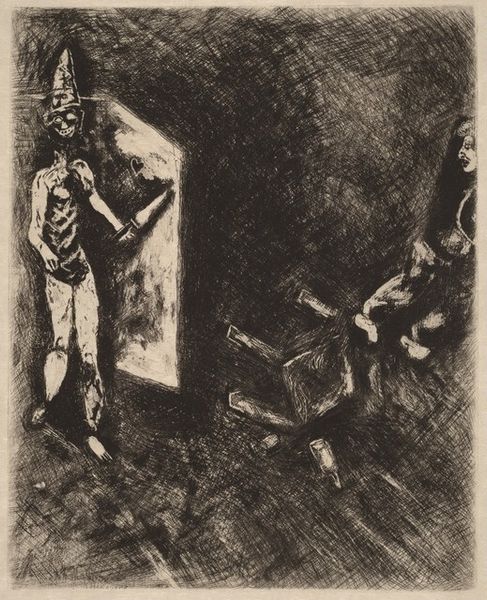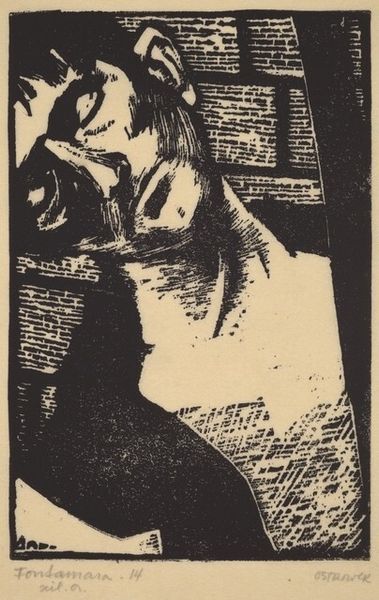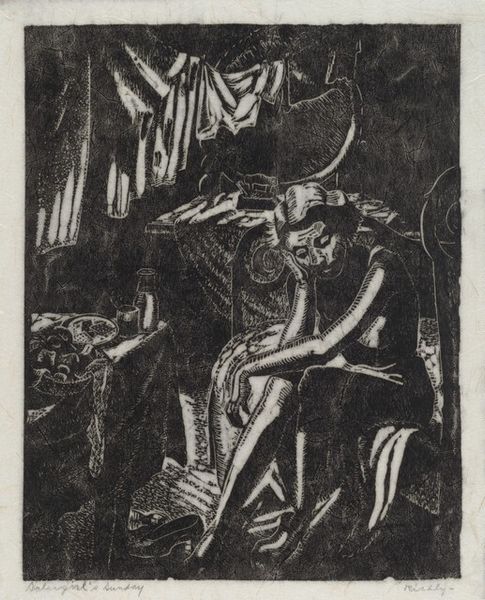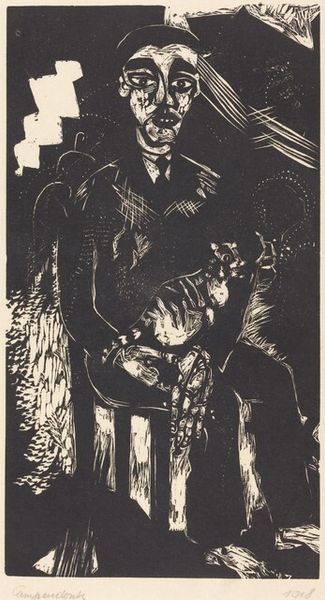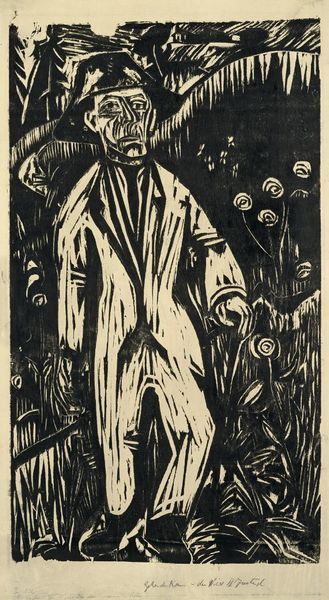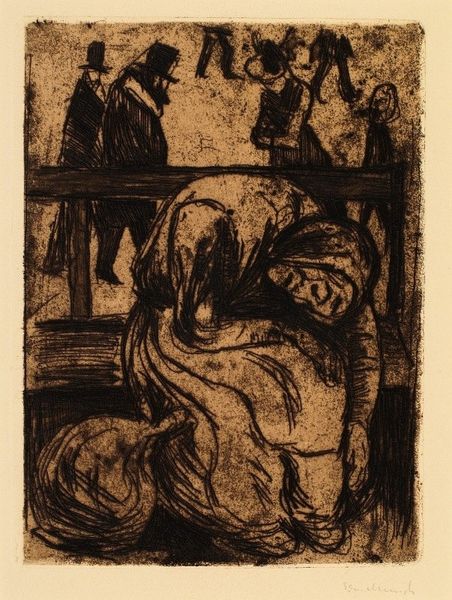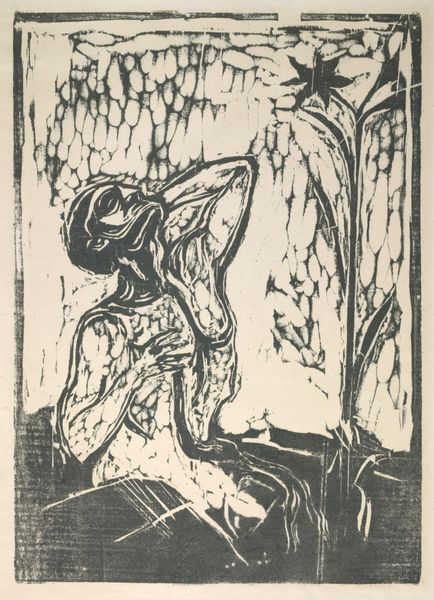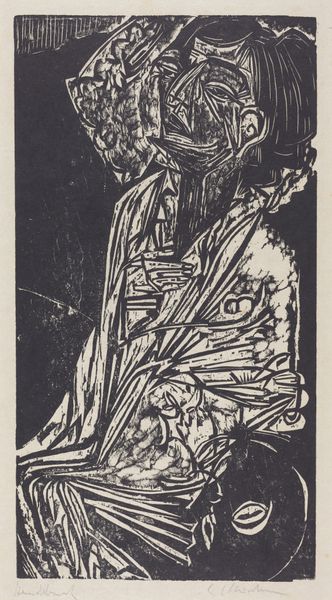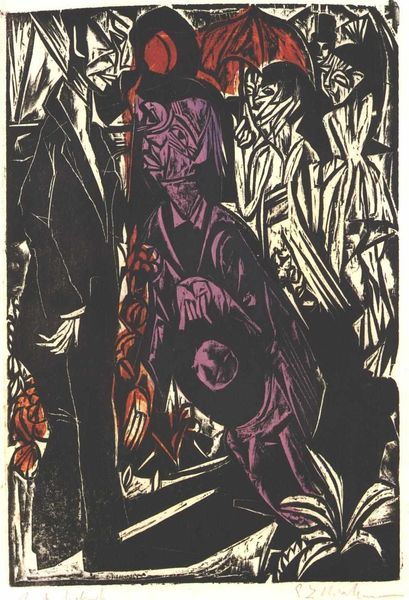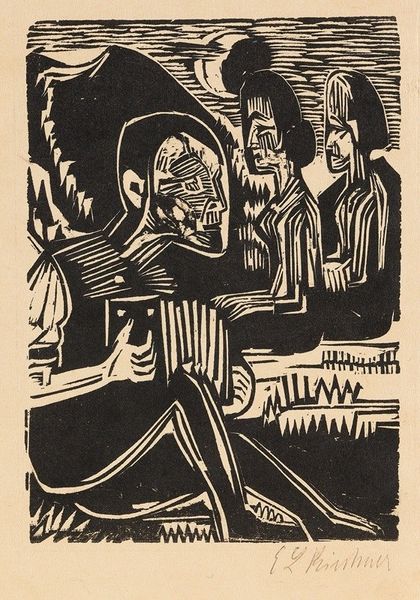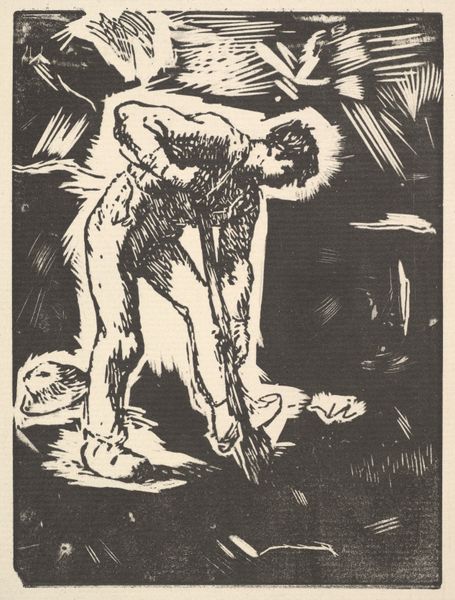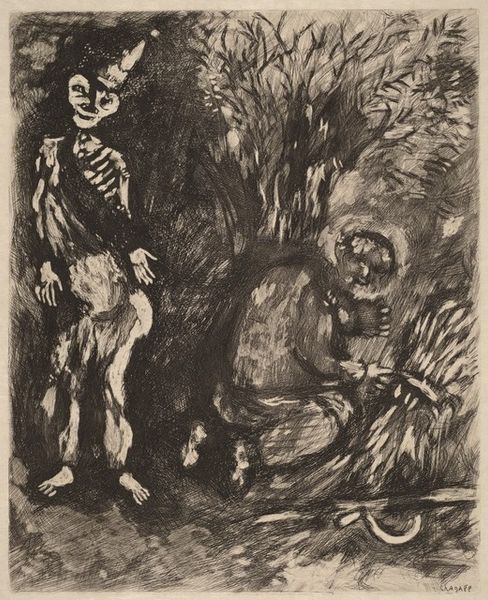
print, woodcut
# print
#
pen illustration
#
german-expressionism
#
figuration
#
expressionism
#
woodcut
#
line
#
monochrome
Dimensions: image: 20.2 x 15.1 cm (7 15/16 x 5 15/16 in.) sheet: 35.7 x 22.3 cm (14 1/16 x 8 3/4 in.)
Copyright: National Gallery of Art: CC0 1.0
Editor: So, here we have Erich Heckel's "Hockender (Crouching Figure)" from 1907, a striking woodcut print. It's monochrome, all stark blacks and whites, and the figure looks incredibly isolated and… vulnerable. What do you see in this piece? Curator: I see echoes of archaic ritual. Consider the composition: the stark contrast, the distorted figure – it speaks to a primal scream within the constraints of early 20th-century anxieties. Think about the figure itself, its hunched posture. Does it evoke for you a sense of shame, of being outcast? Perhaps even the influence of religious iconography stripped of its context? Editor: That’s interesting. Shame wasn't my initial thought. More like exhaustion, maybe even defeat. The starkness of the medium certainly contributes to that feeling. What specific symbols are at play here? Curator: The lines themselves become symbols. The jagged, almost violent, strokes mirror inner turmoil. What of the figure’s hat and averted gaze? Might these not signify a concealment of identity, of interior life? Woodcuts often symbolize a connection to the earth and the basic foundations of human existence, an awareness of cultural roots, tradition, and ancestral memory. Editor: I hadn’t considered the lines as symbolic themselves, only as a formal quality of Expressionism, but that makes a lot of sense, now that you point it out! The way they almost vibrate with tension. Curator: Indeed! These elements coalesce into a potent representation of the human condition caught between the archaic and the modern, an expression of existential struggle resonating with the viewer’s own search for identity. Editor: I think I’m starting to appreciate how much these symbols inform our reading of this piece, transforming a simple image into something much more layered. Curator: The visual language of Heckel gives lasting form to the unspoken, bridging centuries and cultural divides.
Comments
No comments
Be the first to comment and join the conversation on the ultimate creative platform.
